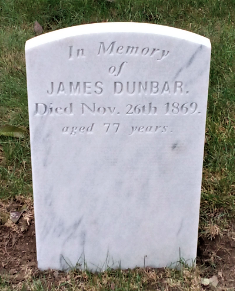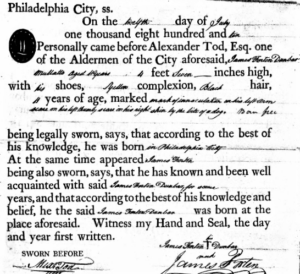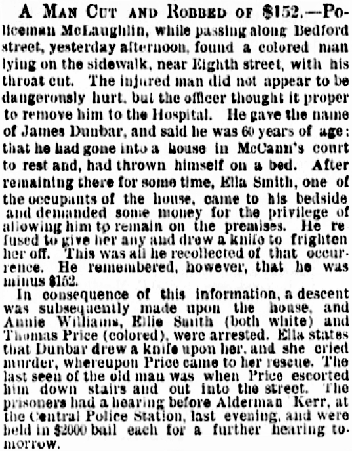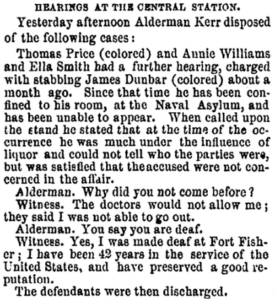Title: Merchant Marine Seaman, Civil War
Birthdate: 1799
Death Date: November 26, 1870
Plot Location: Naval 2, Row 13, Grave 18

Jim was the youngest child born to a free man of color named William Dunbar who died when Jim was about six years old. Jim’s mother was Abigail Forten Dunbar, the sister of an African American abolitionist and sailmaker, James Forten.
As a boy, Jim Dunbar must have been instilled by his uncle with a love of the sea. When he was 11 he was employed as a ship’s boy and had paperwork to prove it, shown here.
 Trans-Atlantic shipping was being disrupted by British naval vessels, attempting to restrict U.S. trade with France. They boarded American merchant ships and hijacked crew members they claimed were British subjects. “Impressment,” as it was known, had been a recurring problem since Colonial times, so Congress passed an act in 1796 to protect American merchant seamen.
Trans-Atlantic shipping was being disrupted by British naval vessels, attempting to restrict U.S. trade with France. They boarded American merchant ships and hijacked crew members they claimed were British subjects. “Impressment,” as it was known, had been a recurring problem since Colonial times, so Congress passed an act in 1796 to protect American merchant seamen.
Customs agents were required to issue Seamen’s Protection Certificates, which verified their identity and nationality. This was an especially critical document for Jim because it clearly includes the words “Born free.”
Life on the sea was easier than life on land for a single black man in Antebellum America. Jim was employed on ships in what is known as the Merchant Marine. The term is used to describe civilian commercial vessels and those who operate them, being registered in a certain country. The Merchant Marine is not a branch of the service; merchant mariners transport cargo and passengers for profit during peacetime, but they can be also called upon to deliver troops and military supplies in wartime.
It could be said the U.S. Navy didn’t establish an impressive profile for itself until after the Civil War, being more interdependent with the Merchant Marine before that time. Jim’s naval enlistment record in 1861 states he had 35 years prior experience. This probably means his Merchant Marine experience was being included.
His record does list some of the naval ships on which he served as a seaman during the War. He was on a tug called the USS Daffodil, the gunboat USS Wabash, and the sloop USS Lackawanna. His job on each ship was “cook and sailmaker.” He was applying the skills of the trade he learned from his uncle a half-century earlier.
Jim was transferred to naval hospitals during the war for rheumatism, incontinence, and finally for senile debility. He was admitted to the U.S. Naval Asylum (or Naval Home) in Philadelphia sometime in the mid 1860s. His senility got his name in the papers in 1869 for the unusual  incident and its aftermath as reported here. He lost a case and lost some money because he lost his memory of who attacked him.
incident and its aftermath as reported here. He lost a case and lost some money because he lost his memory of who attacked him.
Contrary to the inscription on his grave marker, Jim died in 1870, as confirmed by death and burial records. Based on the above certificate stating he was 11 years old in 1810, he would have been about 71 when he died.


Support the Friends of Mount Moriah
Help us in our mission to restore and maintain the beautiful Mount Moriah Cemetery by donating to our cause or volunteering at one of our clean-up events.

